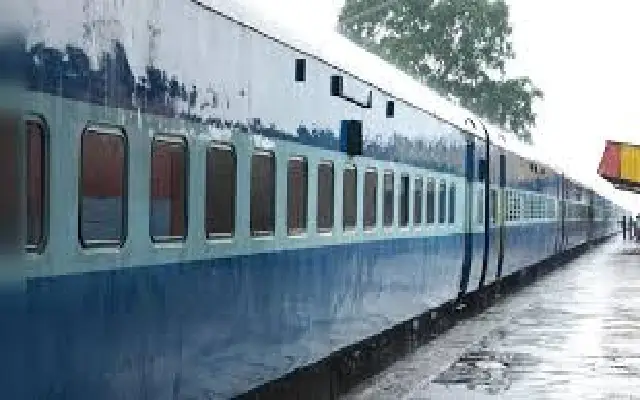
All policy-related issues in infrastructure sectors including those concerning road, ports, shipping, railways, inland water transport, urban development, power, new and renewable energy, railways and telecommunication sector referred to the Department of Economic Affairs by the Administrative Ministries concerned.
India’s infrastructure services are slowly but steadily moving away from the realm of government control to that of the private sector. Across sectors ranging from telecommunications and roads to power and ports, state-owned agencies are giving way to private sector entities operating in a competitive environment and subject to economic regulation where necessary. Governments at both central and state levels are actively engaged in managing this transition, devising appropriate policy frameworks and establishing suitable institutions such as the central road fund and independent regulatory authorities in power and telecommunication sectors.
For the purposes at hand infrastructure policies can be summarized as containing the following elements that led to the present situation:
- a) Rates that were too low to fund continuing maintenance requirements.
- b) Reliance on the Central Government for funding for capacity expansion as well as maintenance, at a time when the Government’s fiscal capacity was being steadily reduced.
- c) Government ownership and control of management decisions and operations.
- d) Lack of participation of users in decisions on maintenance. This particularly undermined the effectiveness of the drainage and irrigation systems.
- e) Some regulations that reinforced Government monopolies and held back private sector participation in providing infrastructure services. Examples include the limitation on the number of commercial airline seats on domestic routes and, until recently, the lack of provision for the public electricity corporation to purchase privately-generated power.
It should be noted that in some cases the implicit subsidies conferred by the low rates were not targeted at the poor, but were rather extended to the general population of users. A common example has been the fees charged for rides on government-owned ferries.
Recently several of these policy orientations have changed. Cost recovery is being emphasised for public services and private companies are being encouraged to provide those services as well. The policy packages set out in this Strategy for the infrastructure sectors follow these new orientations and respond to a vision of how Guyana’s economy could be confirmed in the early years of the 21st century.
The encouragement of private investments in and operation of infrastructure is being extended to major undertakings such as harbours, bridges, power plants and road segments, through the mechanism of offering long-term concessions.
Spatial priorities are being established in the form of completion of an all-weather road to Lethem, which is absolutely essential to unify the nation and to develop a deep water harbour that is readily accessible to that road. Other hinterland access roads will be attended to as well, and the current project of upgrading airport facilities will be brought to completion, to strengthen Guyana’s internal economic linkages and those with the rest of the world.
Rates are being increased for water, electricity and drainage and irrigation. While external funding is being used to rehabilitate the badly deteriorated system of sea defences, cost recovery mechanisms have been designed and will be in place to ensure that long-run maintenance needs are met, thus avoiding a repeat of the deterioration of the sea walls that prompted the need for external assistance.
While some success stories demonstrated that industrialization could be an engine of growth, the road ahead was long for the least developed countries, he said. Most lacked the capacity to meet international social and environmental standards, with infrastructure remaining a critical missing piece of the puzzle. “The only thing we need now is action, action, action, and we need to deliver now”.
Recent Trends: – The Government of India is expected to invest highly in the infrastructure sector, mainly highways, renewable energy and urban transport. High Budget allocations, Smart City Mission, Pradhan Mantri Awas Yojana, new metro rail policy, Housing for all, North East Special Infrastructure Development Scheme (NESIDS), etc.
The Government has introduced certain general measures:
(a) Introduction of uniform tax holiday for 15 years for all infrastructure projects;
(b) Creation of Foreign Investment Implementation Authority to smoothen the flow of FDI into the infrastructure sector;
(c) The import duty structure for project imports rationalised;
(d) Progressive corporatization of public sector service providers in the areas of telecommunication and ports;
(e) Custom duty has been reduced to boost InfoTech, Telecom industries and other knowledge-based industries.
Similarly, new initiatives have been announced for the road, railways, water and air transport, and urban infrastructure sectors. In December 2019 Finance Minister Nirmala Sitharaman unveiled Rs 102 lakh crore of infrastructure projects that will be implemented in the next five years as part of the government’s spending push in the infrastructure sector. Subsequently, a task force identified Rs 102 lakh crore worth of projects after conducting 70 stakeholder consultations in a short period of four months, she said. The minister said another Rs 3 lakh crore of projects is likely to be added to this pipeline. These projects are on top of Rs 51 lakh crore spent by the Centre and the states during the last six years the projects identified are in sectors such as power, railways, urban irrigation, mobility, education and health.
India needs to strengthen some co-ordination instruments across the national and state governments to invest more efficiently in its territory. A better connection between the infrastructure planning and budgeting processes, to date, almost totally disconnected, could also improve the effectiveness of infrastructure investments.
About the Author
Dr V Basil Hans teaches Economics. He is a multidisciplinary researcher. He has authored/edited more than 25 books. He has written 210 articles and given 46 talks. He is the author of Culture of Sanitation from Indus Valley Civilisation to Sulabh.
Image by Bishnu Sarangi from Pixabay

















